High-Density Polyethylene (HDPE) pipes have become a standard choice across various industries due to their exceptional strength, flexibility, and resistance to chemical corrosion. However, one critical factor that determines the long-term performance and reliability of HDPE piping systems is their temperature tolerance. Understanding how HDPE pipes respond to temperature extremes is essential for ensuring their optimal functionality in both high-pressure applications and challenging environmental conditions. This article explores the temperature limits of HDPE pipes, offering detailed insights into how temperature impacts their structural integrity, service life, and safety. Whether you’re designing industrial pipelines or managing water distribution systems, this guide will equip you with the knowledge needed to make informed decisions and maximize the durability of your HDPE infrastructure.
What is the Temperature Rating of HDPE Pipe?
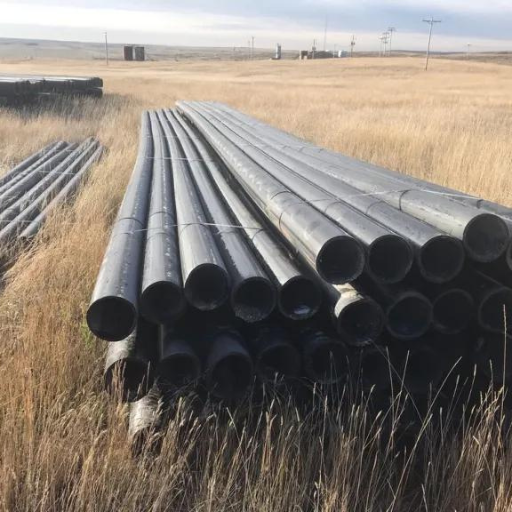
How is the temperature rating of Polyethylene Pipe Determined?
Polyethylene pipe temperature rating is assigned as a function of its material composition, manufacturing process, and performance under standardized test conditions. One of the temperature rating factors is long-standing thermal deformation resistance upon exposure to elevated temperatures. HDPE material is considered generally favorable and application-wise better because of its greater mechanical properties and thermal stability compared to low-density ones.
Standardized tests like ASTM and ISO, for example, have long sought to rank by long-term hydrostatic strength at different temperature ranges. In typical tests, a pipe is maintained under a constant internal pressure while subjected to a specified temperature for thousands of hours, thus testing its ability to maintain structural integrity. Upon establishing the limit below which pipe performance may be safely maintained, the maximum operational temperature rating has been found.
Furthermore, manufacturers analyze any environmental effects associated with UV exposure or chemical interactions that could affect the rating in temperature. The final rating is drawn from these considerations, with incorporated safety factors and application-dependent guidelines to ensure both accuracy and reliability. Following the temperature ratings recommended by manufacturers is one preventive measure all users should take to ensure material failure is circumvented and further guaranteed for operational efficiency.
Maximum Temperature Limit of HDPE Material
High-density polyethylene (HDPE) is a thermoplastic polymer used for durable and versatile applications. Continuous use temperatures for HDPE are considered to be between 120 °F-140 °F (49 °C-60 °C), which vary with grade and formulation. When this temperature is exceeded, the material may soften, deform, and lose its mechanical properties.
Temperature resistance in HDPE depends a great deal on molecular structure and any additives used. For instance, grades developed for high-temperature applications may contain stabilizing additives to enhance thermal resistance. For generic use, however, any prolonged periods above 140 °F (60 °C) lead to accelerated ageing and therefore reduced service life.
One should follow the manufacturer’s instructions, taking into consideration environmental factors such as pressure, chemical exposure, and load conditions that may reduce the effective upper temperature limit. It is essential to select the proper grade of HDPE for the application concerned to guarantee safety and a state of operations within the temperature range given above.
Temperature Ratings Of Different Pipe Materials
Temperature ratings for various piping materials change according to composition, design, and requirements of use. High-density polyethylene pipes normally experience an operating temperature range of 32°F to 140°F (0°C to 60°C). At the high end of the temperature scale, HDPE can resist exposure for short periods, but longer-lasting exposure at elevated temperatures will cause deterioration of the material, thereby reducing mechanical strength and service life. It performs well in conditions of moderate temperature and pressure, thus being suitable for water and wastewater applications.
The operation temperature of PVC pipes lies within the range of 33°F to 140°F (1°C to 60°C). Like HDPE, PVC suffers from a steep drop in pressure resistance at higher temperatures. PVC finds applications, such as in potable water distribution and drainage systems, where temperature conditions are well and truly balanced within this working window. But if your application involves temperatures that exceed 140°F, materials other than PVC should be investigated.
Offering better temperature resistance, PEX pipes have an operational range from 32°F to 200°F (0°C to 93°C). This broader range makes PEX applicable in hot water systems, radiant heating, and certain industrial installations. PEX is flexible, strong, and resistant to thermal stresses, making it well suited for installations exposed to high-temperature fluids or where thermal shock is a frequent occurrence. Knowing the particular needs and features of these materials ensures their proper selection and safe operation in diverse applications.
Understanding the Temperature Limitations of HDPE Pipes
What is the Maximum Operating Temperature for HDPE Pipes?
High-Density Polyethylene is essentially an emblem of durability and flexibility, thus its many applications. Typically, HDPE pipes carry a maximum temperature rating of 140°F (60 °C) for continuous use. Anything beyond this induces poor property degradation of the material and, in turn, creates some problems like deformation, reduction in tensile strength, and efficiency in performance.
Generally, HDPE reacts well under temperature-moderate conditions; however, it becomes imperative to factor in the working environment of the particular pipeline at hand. Higher temperatures will gravely accelerate the processes of thermal expansion and material fatigue, particularly in pressurized systems. The engineers must, therefore, account for the stress regression properties in the pipe material, as given by the Hydrostatic Design Basis (HDB), and apply adequate design factors to enhance their performance.
As an evolutionary approach to material science, attempts have been made to synthesize HDPE types with improved temperature resistance. If higher-than-usual temperatures come into play, alternative materials, such as cross-linked polyethylene (PEX) or metal piping systems, should be considered to avoid compromise of system integrity and safety.
Impact of Extreme Temperature Conditions on HDPE Pipes
Extreme life-threatening temperature conditions take hold of the performance and life expectancy of HDPE (High-Density Polyethylene) pipes. Such effects are primarily due to the plastic behavior of HDPE, which is temperature-dependent. The five key impacts of extreme temperature conditions on HDPE pipes are discussed below:
- Thermal Expansion and Contraction: HDPE pipes undergo considerable expansion and contraction with changing temperatures. For example, HDPE pipe expands about 0.2 inches for 10 feet of pipe for each 10°F elevation in temperature. Dimensional changes like these have to be taken into account during installation, as repeated expansions and contractions may cause the formation of stress points and cracking of the pipes.
- Reduced Tensile Strength at High Temperatures: Tensile strength decreases in HDPE pipes when subjected to higher temperatures, and such a decrease affects the pressure resistance. HDPE of normal grades loses about 50% of its tensile strength when subjected to temperatures near its limit of 140°F, whereby the application of derating factors must be considered whenever the system is to be operated in such high-temperature conditions.
- Accelerated Material Degradation: Surgical exposure to temperatures higher than the recommended will accelerate oxidation degradation in HDPE pipes. This phenomenon weakens the polymer molecular arrangement, thereby turning the material brittle with a shorter service life and especially in situations where long-term applications are of consideration.
- Stress Cracking Due to Thermal Cycling: Frequent and severe thermal cycling-cracking under conditions of repeated heating and cooling-is another way in which HDPE is affected. This is more of a problem when the materials used are of an old-made or lesser quality, compared to older or inferior grades.
- Decreased Impact Resistance with Lower Temperatures: Frozen or sub-frozen conditions greatly hamper the impact resistance of the HDPE pipes. At and below 32°F, the material’s flexing ability becomes restricted; eventually, this will make it more susceptible to cracking when subject to sudden impacts or heavy-strain applications.
Each of these effects can emphasize the need for unique material selection, design considerations, and compliance with operational temperature boundaries to guarantee the functionality and longevity of HDPE piping systems in such harsh environments.
How HDPE Pipes Perform in Extreme Cold?
HDPE pipes have a unique range of performance characteristics in extremely cold conditions, and their behavior depends on the thermoplastic nature of the material. At freezing and subfreezing temperatures, HDPE holds its strength, while its modulus of elasticity and impact resistance are greatly changed. In detail, due to cold embrittlement, the material loses its flexibility as the temperature is lowered below its glass transition temperature, which lies around 103°F (-75°C). At operating conditions near typical freezing points of 32°F (0°C) or slightly lower, where forceful, sudden, dynamic loads can be avoided, the material will continue to perform.
In general, empirical studies show that HDPE pipes withstand static pressure in extreme cold better than many of the rigid materials, due to their molecular arrangement. Theoretically, sudden impacts, such as those caused by water hammer effects at high velocities, will initiate stress cracking in the pipe wall. Thus, if one insulates properly and manages pressure variations through the system, there is no reason that the pipes cannot be kept operational in such harsh environments. For below-freezing applications, the designer will often base material grading and installation practices on such standards as ASTM D3350 or ISO 4427, with an emphasis on long-term ability to withstand thermal contraction.
Polymer blend technologies are at the forefront of helping manufacturers address some of the temperature-related shortcomings of the material. Modified polyethylene formulations are engineered to provide an extended range of service in extreme environments, speaking of continued innovations in high-performance piping systems for cold-climate applications.
How Pressure Affects HDPE Pipe Temperature Ratings
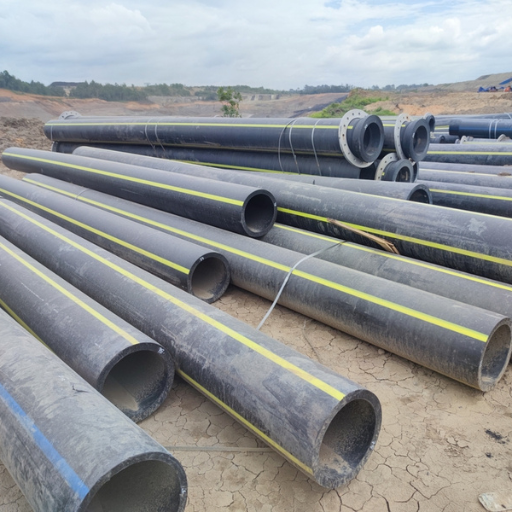
Relationship Between Pressure and Temperature Limit
Temperatures affect the pressure rating system of HDPE pipe due to the peculiar viscoelastic nature of this material. HDPE pipes are laid down to hold specific pressure ratings at specified temperatures, and the performance goes down as higher temperatures are encountered. A standard working pressure for an HDPE pipe at 73°F (23°C) drops significantly as temperatures approach 140°F (60°C), because tensile strength and rigidity of the polymer diminish at higher temperatures.
At increased pressures, the material undergoes a faster creep rate and stress relaxation, which can favor deformation and failure in due time. In the manufacturer’s catalogues, the derating factor is usually given, emphasizing specific values that negate the pressure rating based on the operating temperature. For example, a pipe rated at 80 psi might require a derating factor of 0.5 at 140°F, making the effective rating down to 40 psi.
Designing these systems should surely warrant consideration for these to keep all systems functioning within the material limits in the actual environment. Using reliable data and calculations from the standards will, therefore, be a means to minimize the risk of overloading the pipeline and thus ensure the longevity and integrity of the system.
The Role of Wall Thickness and Material Grade
In the determination of pipeline strength and performance, the presence of wall thickness and material grade is appreciated. The wall thickness is directly proportional to the pipe’s ability to resist an internal pressure; the partner having thinner walls will possess lower resistance to stresses, such as the hoop stress developed by the pressurized fluids. The engineers determine the minimum wall thickness on a minimum basis, as set down by the codes such as the ASME B31.3, which considers the internal pressure, diameter, and a safety factor for reliable operational safety.
Material grade governs tensile strength, temperature tolerance, and corrosion resistance. If high-grade materials are selected, such as stainless materials or a high-strength carbon steel, they will provide higher serviceability in the face of harsh environmental conditions, such as very high-temperature operations or chemical exposure, to fulfill severe industrial applications. But such trade-offs as cost and ease of manufacture should be kept in mind because using a higher-grade material pushes the budget of the project considerably up.
Taken together, wall thickness and material grade would intersect with the pressure rating of a pipeline and thereby ensure that the standards of commerce are met. Within the ambit of thorough knowledge with respect to these parameters, supported by proper material testing and sound design methods, lie the possibilities of pipelines being able to meet long-term operational demands without failure.
Ensuring Safe Temperature and Pressure Levels in Industrial Applications
The safe control of temperature and pressure levels in industrial applications calls for combined efforts involving good engineering design, advanced control systems, and institutional standards. Materials used in industrial operations must, therefore, be addressed for their physical and chemical properties. Pipeline materials, for instance, will need to be selected based on tensile strength, thermal conductivity, corrosion resistance, and other qualities, bearing in mind that pressure and temperature are subject to fluctuations. It is highly important for pipeline wall thickness under operation of varying conditions to be accepted according to calculations for stress tolerances based on recognized standards such as ASME B31.3 for process piping or for design by particular site safety regulations under the provision of set operating pressure ranges.
Safety standards have permeated advanced maintenance systems, with real-time sensors monitoring changes in pressure and temperature–thus, providing instant data to prevent equipment failure. In most cases, IoT-based applications are developed to integrate such systems into centralized control systems for predicting maintenance. Furthermore, one could use thermal imaging to assess heat distribution through equipment, revealing any hot spots that could exacerbate material fatigue or rupture.
Safe measures such as periodic maintenance and pressure release systems combined with reliable pressure relief valves will enhance durability and safety. Thorough inspections, per API 510 standard for pressure vessels, must be performed to identify wear or corrosion and detect mechanical stresses compromising the integrity of the system as these evolve. In addition, safety margins above design maximum operating conditions provide additional assurances for unexpected surges of pressure and temperature. In tandem, these detailed actions go a long way towards reducing the risk of failures, thus extending the life of the equipment while facilitating operating efficiency and worker safety.
Choosing the Right Pipe for Extreme Temperature Applications
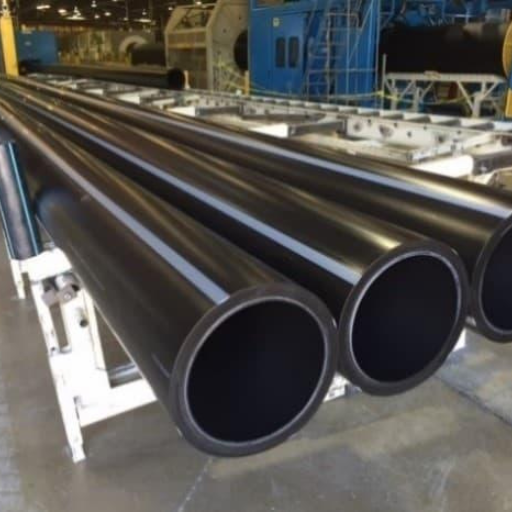
Benefits of Using High-Density Polyethylene in Industrial Applications
The High-Density Polyethylene (HDPE) is well known in industrial settings, as it harbors a unique set of properties to impart the highest performance in demanding circumstances. The following are five specific advantages of industrial working of HDPE, accompanied by data and details:
- Extreme Temperature Resistance: HDPE shows very good room temperature stability and tolerates a wide range of temperatures varying from -40°F to 176°F (-40°C to 80°C), withstanding extreme thermal conditions usually encountered in chemical processing and oil, gas industries.
- Impact Strength: It is a material with high impact resistance, even under low temperatures. HDPE has been tested to withstand great loads and stresses and remains tough when used in hefty applications, like pipeline systems and industrial storage tanks.
- Corrosion Resistance: Being a polymer, unlike metals, HDPE exhibits resistance to chemical and environmental corrosion. It is particularly suitable for acids, alkalis, and other aggressive chemicals and makes for a long-lasting solution in an environment where conventional materials quickly degrade.
- Lightweight and High Strength-to-Density Ratio: HDPE, being lightweight, possesses much strength that contributes to easier transportation and installation. HDPE pipes weigh nearly one-eighth of concrete pipes, and yet they can withstand greater pressure.
- Low Maintenance and Longevity: Inherent toughness and resistance to wear give the materials the attribute of low maintenance. According to studies, HDPE systems often retain optimal performance over 50 years, thus affording cost-effective long-life solutions for the industries requiring such a level of reliability.
These benefits prove the importance of HDPE in several industrial applications to meet specific requirements for strength, efficiency, and flexibility in very trying environments.
HDPE vs. PVC: Which Piping Solution is Better for Extreme Temperatures?
Higher durability and a wider temperature range (-40°F to 140°F) are what make HDPE better for extreme temperatures, whereas PVC is limited to 140°F and tends to be more brittle.
|
Aspect |
HDPE |
PVC |
|---|---|---|
|
Temperature |
-40°F to 140°F |
Up to 140°F |
|
Sunlight |
Resistant |
Vulnerable |
|
Flexibility |
High |
Low |
|
Strength |
Superior |
Moderate |
|
Connection |
Heat Fusion |
Adhesive |
|
Expense |
Higher upfront |
Lower upfront |
|
Longevity |
100+ years |
50+ years |
|
Chemicals |
Resistant |
Moderate |
Applications of HDPE Pipes in Oil and Gas Fields
HDPE pipes have become a critical component in oil and gas operations because of their durability, flexibility, and resistance against harsh environmental conditions. The following are five major applications of HDPE pipes in the oil and gas industry, along with detailed explanations:
- Produced Water Management: HDPE pipes come into wide use for carrying produced water, which is a by-product of oil and gas extraction processes. Due to corrosion resistance, they work for a long period, even in the presence of saline or chemically contaminated fluids. Research indicates that these pipes can resist degradation in the presence of water containing total dissolved solids (TDS) concentration exceeding 50,000 ppm.
- Oil and Gas Gathering Systems: In gathering systems, pipes are used to carry crude oil, natural gas, and other hydrocarbons from wells to processing facilities. They might be faced with very high pressure and temperature extremes ranging from -40 40°F to 140°F in hostile environments, including remote or offshore fields.
- Pipeline Rehabilitation Projects: HDPE liners are more common for rehabilitating aging underground pipelines to restore their functionality without undertaking work on the entire system. Designing slip-lining and close-fit lining techniques involving HDPE can prolong the service life of the pipeline for a few decades while reducing downtime and costs.
- Chemical and Slurry Transport: HDPE pipes are considered the best for transporting chemicals and abrasive slurries such as drilling slurry or fracturing slurry because they resist abrasion and can accommodate a varied pH range of 1 – 14. The abrasion resistance protects against pipe wear and rupture in an application involving an aggressive medium.
- Gas Distribution Networks: Natural gas distribution relies heavily on HDPE piping because of its leak-proof heat-fused joints and resistance to ground movements. There are about 90% of gas distribution networks making use of HDPE pipes, and studies have proven less methane leakage and increased safety compared with older materials like steel.
Thus, these varied applications exhibit that HDPE piping is indispensable in the oil and gas industry, facing complicated operational challenges, while efficient and durable yet cost-effective systems are ensured.
What are the Applications of HDPE Pipes in High-Temperature Situations?
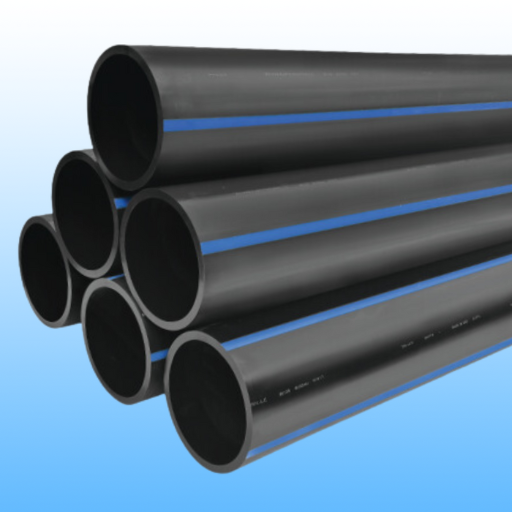
Can HDPE be used in drinking water systems?
Being non-toxic, chemically resistant, and durable in nature, HDPE constitutes an excellent choice for drinking water systems. Made of a safe, licensed food-grade plastic engineered not to leach harmful chemicals into the liquid, HDPE pipes assure the purity and safeguard of potable water: corrosion-resistant and scale-resistant conditions of water being among the foremost considerations in terms of infrastructure with a long lifespan.
One more property that makes HDPE beneficial in potable water systems is the flexibility it offers against environmental forces. These pipes cope well with temperature fluctuations, land movements induced by all forms of anthropogenic activities, even seismic activities, which allows their usage even in areas with critical geological conditions. Being extremely durable (could last 50-100 years), HDPE pipes minimize the heavy maintenance cost usually borne over time and eventually lower the cost of replacements. Due to the smooth surface inside, hydraulic friction is comparatively less in HDPE pipes, thereby ensuring better flow rates and lesser energy consumption in pumps of water distribution systems.
There are also economic and environmental considerations in favor of HDPE pipe. Being lightweight, HDPE pipe reduces transportation and installation costs when compared with conventional piping materials like steel or concrete. HDPE pipes are environmentally friendly since they can be recycled. In conjunction with modern advancements in joint fusion technologies, systems of HDPE pipe laydown ensure the leak-proof networks that reduce water loss and guarantee uninterrupted delivery of safe drinking water. It is because of these reasons that HDPE is now chosen as a solution in the design and implementation of both new and rehabilitated drinking water systems around the world.
Uses of HDPE in the piping industry
HDPE pipes find application across various industries due to their flexibility, resistance to environmental factors, and high tensile strength. Some examples include:
- Water Distribution: HDPE pipes are used in municipal water supply lines or residential plumbing because they are long-lasting, leak-proof, and capable of withstanding high pressure.
- Sewer and Drainage: They are helpful for sewer systems or stormwater drainage since their inner walls are smooth enough, resulting in reduced frictional losses.
- Natural Gas Distribution: This plastic type is strong enough and corrosion-resistant to safely transport gas through its pipelines.
- Irrigation Systems: Using tubes ensures efficient irrigation practices, leading to better crop distribution and conservation of this natural resource.
- Industrial Applications: Due to its exceptional chemical resistance to most chemicals and higher temperatures, HDPE has numerous industrial applications, such as chemical transportation.
These applications show that HDPE is a trusted material that can be used in pipe systems across many sectors.
Benefits derived from using High-Density Polyethylene (HDPE) in hot water distribution
Offering great advantages to hot water distribution networks, HDPE stands out with its material characteristics and high manufacturing standards. HDPE pipes hold up well against hot temperatures, during which their structural integrity may be compromised. Therefore, they find applications in hot water systems in which other materials would degrade in either short or extended durations with prolonged exposure to elevated temperature.
The key benefits of these pipes lie in their inherent flexibility, which allows them to resist stresses inside joints due to expansion and contraction from thermal cycles. To add, HDPE pipes resist scaling and corrosion, which are some major challenges confronted in conventional metal piping systems whenever they are exposed to high mineral and chlorine content in hot water. So, these pipes assured a longer service life without much need for maintenance and ensured that the flow rate remains constant.
In terms of efficiency, their lightweight nature helps in installing HDPE pipes easily, thus requiring less labor time and reducing overall project cost. It also features a fusion-welding technique that joins pipes to give a seamless, leak-proof joint, which adds durability to the system and saves it from water loss. Moreover, with recent advances in HDPE formulations to enhance the insulation capabilities, the thermal losses from water conveyance are reduced. Hence, these factors, along with the recyclable possibilities of HDPE materials, pave the way for modern, sustainable, and cost-effective hot water applications in residential, commercial, and industrial sectors.
Reference sources
- Plastic Pipe Institute: HDPE – This source provides comprehensive information on HDPE pipe pressure ratings and temperature limits.
- Chevron Phillips Chemical: The Performance Pipe Field Handbook – This handbook details the temperature range and performance of DriscoPlex® PE4710 polyethylene pipe.
- Legacy HDPE: The Temperature Limits of HDPE Material – This article discusses the temperature limits of HDPE material, ensuring its reliability in various temperature conditions.
Frequently Asked Questions (FAQs)
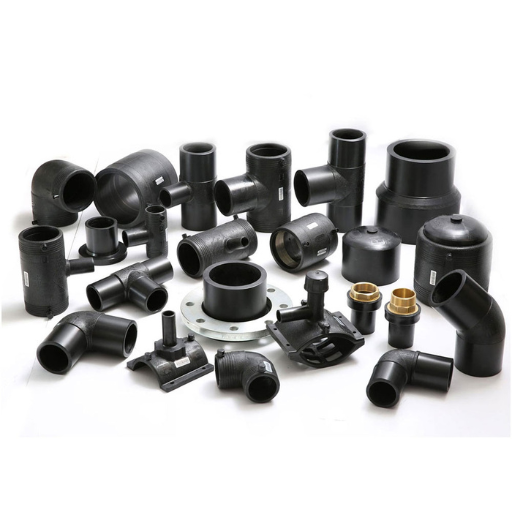
Q: How does the thickness of a wall affect temperature rating and pressure in bars for HDPE pipes?
A: The thickness of an HDPE pipe’s wall directly affects its pressure rating; thicker walls can handle higher pressures and temperatures. Manufacturers have guided related wall thickness and maximum operating grades with temperature ratings.
Q: Are HDPE pipes suitable for low-temperature uses?
A: However, care must be taken when using them in low-temperature applications. In icy weather environments, impact strength may decrease, so ambient temperature must be factored into choosing HDPE pipes for particular applications.
Q: What are HDPE butt fusion and electrofusion fittings, and what are their relationships with temperature ratings?
A: Butt fusion and electrofusion processes are used in joining HDPE pipes with fittings. These unions should have temperature ratings that match the HDPE pipes to secure connection without leaks under operating conditions.
Q: What are some frequently asked questions about using HDPE Pipe Fittings?
A: There are frequent questions regarding compatibility with different varieties of these tube fixtures, installation techniques, and behavior at various temperatures and pressures. Manufacturers or out-of-the-box norms need to address specific applications.
Q: How does carbon black in HPDE influence their high-temperature performance?
A: HDPE tubes often contain carbon black, which enhances UV protection and increases impact resistance. It also reduces degradation risks due to environmental factors, maintaining pipe integrity under high-temperature applications.
Q. What does nominal pressure (PN) mean for the water industry’s HDPE Pipes?
The nominal pressure industry represents the maximum pressure an HPDE pipe system can sustain when opeindustry’sr specific temperatures. Therefore, PN information is critical in ensuring that selected pipes and fittings meet operational requirements for the water distribution system.





